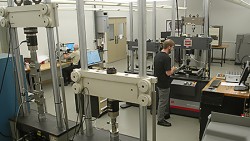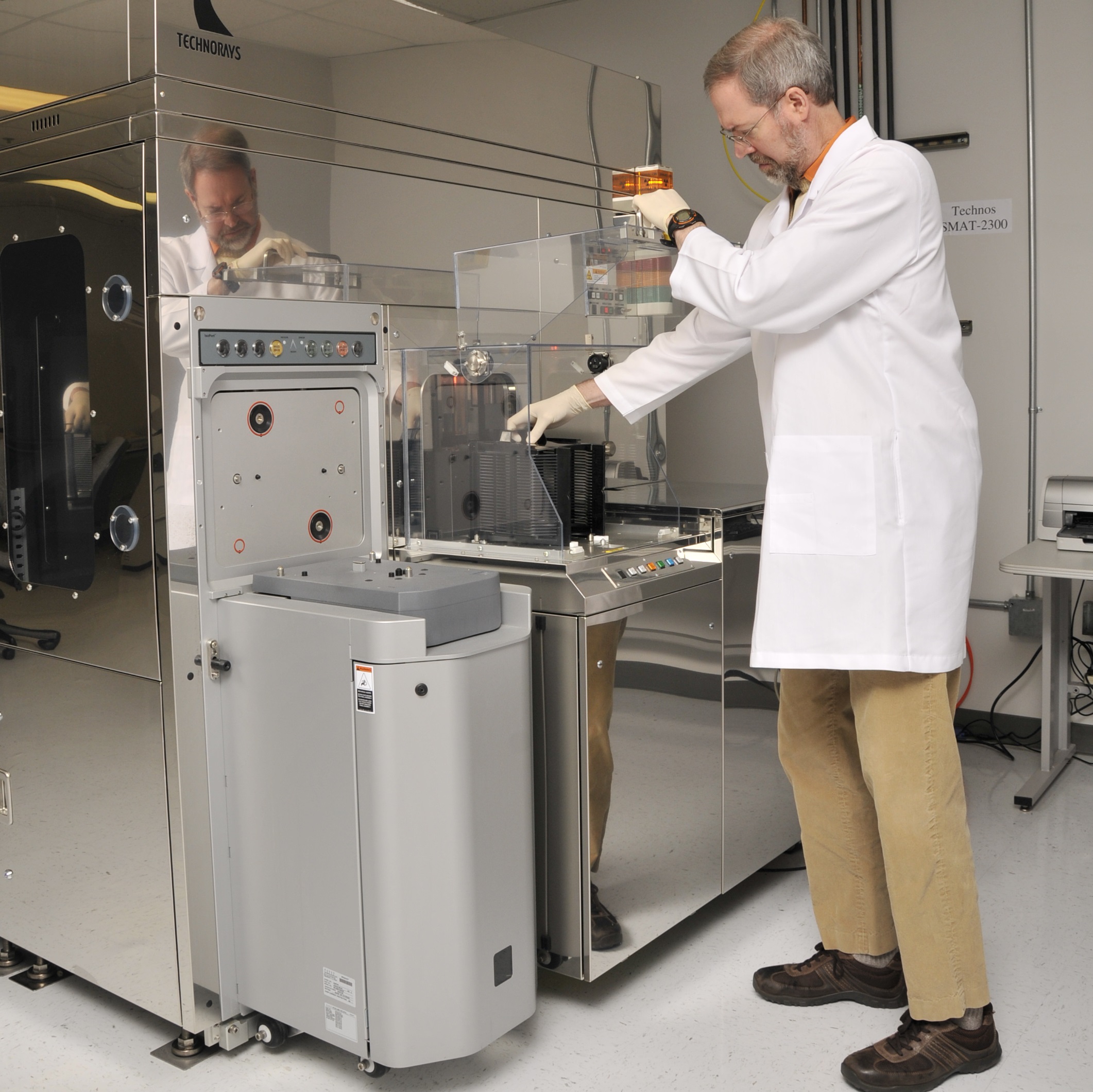Material Testing Lab Mastery: Raising the Criteria of Job Dependability
Wiki Article
Improvements in Product Screening for Boosted Quality Control
In today's hectic and competitive markets, making sure top quality materials is critical to success. As technology remains to advancement, so does the demand for extra innovative material testing methods. From non-destructive testing strategies to automated systems, the field of product screening has seen exceptional developments. In this conversation, we will certainly check out a few of the most recent trends in material screening, including making use of advanced sensor technologies, the combination of information analytics, and the role of expert system. These advancements not only promise enhanced quality guarantee yet additionally hold the possible to reinvent industries across the board. So, let's dive right into the globe of developments in material screening and discover how these innovations are forming the future of high quality guarantee.Non-Destructive Evaluating Approaches
Non-Destructive Testing Techniques play an essential function in ensuring the integrity and top quality of products without endangering their structural honesty. These techniques are used in various markets, including building and construction, manufacturing, and aerospace, to discover and recognize flaws or abnormalities in materials or structures. By utilizing non-destructive testing engineers, strategies and professionals can examine the homes, qualities, and efficiency of materials without causing any type of damage.One commonly utilized non-destructive screening technique is ultrasonic screening (UT) UT involves the usage of high-frequency sound waves to detect flaws such as fractures, voids, and incorporations in materials.

Non-destructive testing techniques provide beneficial details about the top quality and integrity of products, making sure that they fulfill the needed specifications and standards. By executing these methods, industries can boost their quality control procedures, reduce the risk of failing or accidents, and eventually deliver safer and extra trustworthy products to consumers.

Automated Testing Solutions
Automated testing systems have actually transformed the area of material screening, giving effective and accurate approaches for evaluating the top quality and honesty of products. These systems utilize sophisticated technologies and formulas to automate the testing procedure, reducing human error and increasing performance.One key benefit of automated screening systems is their capacity to carry out examinations at a much faster rate than hands-on screening methods. With making use of robotics and innovative software program, these systems can conduct numerous examinations at the same time, significantly lowering the time needed for testing large sets of materials.
Additionally, automated testing systems use a higher level of accuracy and accuracy contrasted to manual testing. They can perform examinations with consistent specifications, guaranteeing that the outcomes gotten are trustworthy and reproducible. By eliminating human subjectivity and variability, these systems provide a much more objective analysis of material top quality.
Moreover, these systems are equipped with sophisticated sensors and detectors that can find even the tiniest flaws or discrepancies in material buildings. This makes it possible for early discovery of possible problems, enabling producers to take corrective actions before the materials are used in critical applications.
Along with their efficiency and accuracy, automated testing systems additionally boost safety in product testing. By decreasing human participation in potentially hazardous testing procedures, these systems minimize the danger of injuries and crashes, guaranteeing a more secure working environment.
Advanced Sensor Technologies
With the integration of innovative sensing unit technologies, material screening systems have actually accomplished even better levels of precision and efficiency (material testing lab). Advanced sensing unit innovations play an essential function in improving the quality control process by supplying real-time and accurate data throughout product screening. These sensors are capable of identifying and measuring different physical properties such as temperature, pressure, vibration, and stress, permitting a thorough analysis of the material's habits under different conditionsOne of the vital advancements in sensor innovations is the development of wireless sensors. These sensing units eliminate the need for cumbersome circuitry and make it possible for smooth data transfer, improving the total flexibility and flexibility of the screening process. Furthermore, wireless sensing units can be conveniently incorporated into existing product screening systems, making them an affordable remedy for boosting and updating testing capacities.

Artificial Intelligence in Material Screening
Expert system has reinvented the field of material screening, bringing unprecedented levels of precision, efficiency, and anticipating abilities to the top quality guarantee process. With the capability to analyze huge quantities of information and recognize patterns that might go undetected by human operators, AI algorithms have actually considerably boosted the dependability of material testing treatments.Among the crucial benefits of making use of AI in material screening is its capability to forecast material habits under different conditions. By educating AI designs on historical data, scientists can establish predictive models that can approximate the efficiency of products in real-world circumstances. This permits manufacturers to optimize product choice and layout, minimizing the demand for costly and lengthy trial-and-error procedures.
Additionally, AI can improve the product and automate testing process, improving efficiency and reducing human error (material testing lab). AI-powered systems can autonomously bring out testing procedures, gather and assess information, and generate detailed records. This not just saves time but also makes certain trustworthy and consistent results
Furthermore, AI can detect and assess worldly issues or abnormalities with high accuracy. By comparing test results to predefined standards, AI algorithms can swiftly recognize discrepancies and alert drivers to potential concerns. This very early discovery of defects helps avoid faulty products from getting in the manufacturing procedure, eventually improving product high quality and client fulfillment.
Integration of Data Analytics
Information analytics plays an important duty in the combination of product screening processes, enabling producers to remove useful insights and make notified decisions. By using advanced analytic strategies, makers can examine big volumes of data accumulated throughout product screening to determine patterns, patterns, and abnormalities that may impact the quality and performance of their products.Integration of data analytics in product testing enables manufacturers to check and evaluate different criteria and try this web-site variables during the testing procedure. This includes elements such as temperature level, pressure, stress, and various other environmental problems that can influence the habits and features of materials. By examining this information, makers can gain a much deeper understanding of how various variables engage and influence the performance of their materials.
In addition, data analytics assists in identifying potential issues or weaknesses in materials, making it possible for makers to take positive procedures to deal with these issues prior to they bring about item failings or safety hazards. This positive method can dramatically enhance the total quality guarantee process and improve customer satisfaction.
Along with recognizing problems, information analytics can likewise enhance product screening treatments by determining locations of enhancement and suggesting alterations in the screening methods. By analyzing historical information, makers can recognize patterns and patterns that can assist them streamline their screening processes, decrease costs, and improve effectiveness.
Verdict
To conclude, innovations in material screening have led to improved quality control in various sectors. Non-destructive screening methods, automated testing systems, progressed sensor modern technologies, and the combination of data analytics have all played a significant role in enhancing the precision and effectiveness of product screening processes. In addition, the application of synthetic intelligence in material testing has better added to the growth of even more reliable and precise screening strategies. These improvements have actually resulted in better products and enhanced consumer satisfaction.From non-destructive testing techniques to automated systems, the field of product testing has seen remarkable advancements. Cordless sensors can be conveniently incorporated into existing product testing systems, making them an economical option for improving and upgrading screening capabilities.
Assimilation of data analytics in product testing allows makers article to keep track of and review numerous criteria and variables during the screening process. Non-destructive testing techniques, automated screening systems, progressed sensor technologies, and the integration of data analytics discover this have all played a significant function in enhancing the accuracy and effectiveness of material screening processes. Furthermore, the application of artificial knowledge in material testing has actually further contributed to the development of more exact and trustworthy testing methods.
Report this wiki page